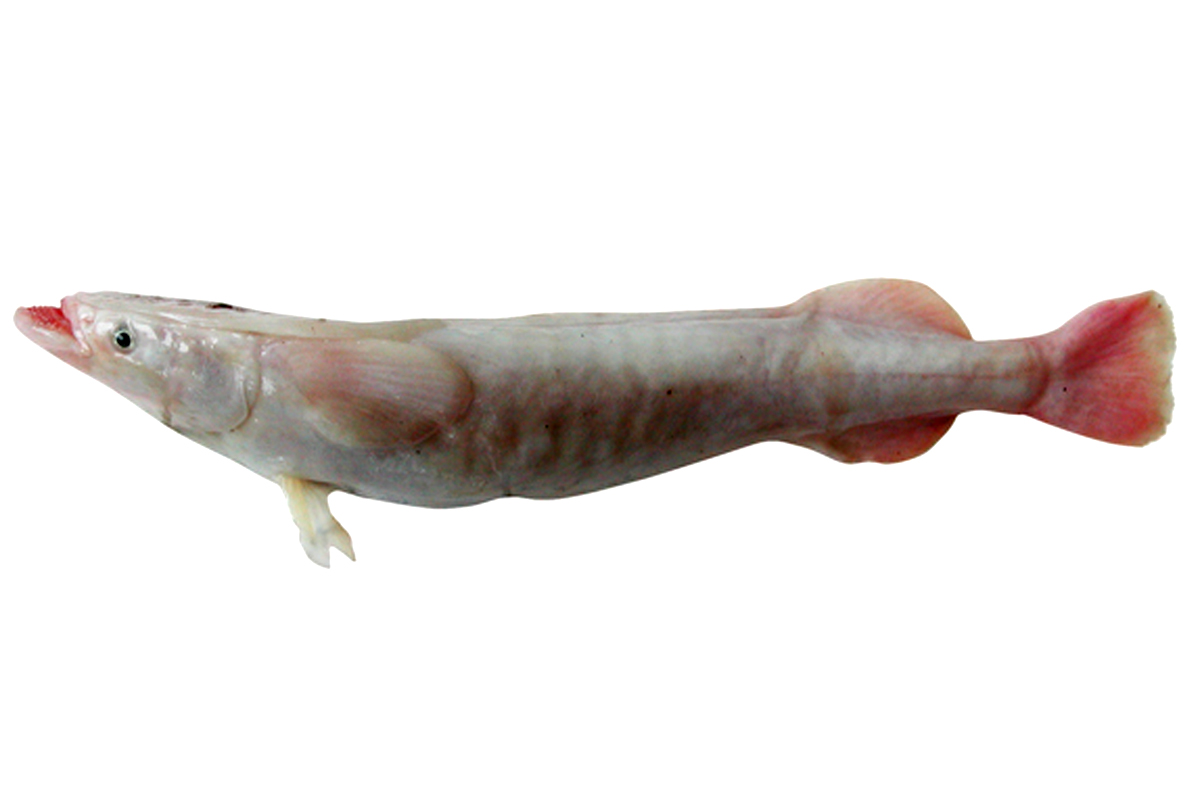- Classification
- ACTINOPTERYGII
- PERCIFORMES
- ECHENEIDAE
- Remora
- albescens
White Suckerfish, Remora albescens (Temminck & Schlegel 1847)

White Suckerfish, Remora albescens. Source: Australian National Fish Collection, CSIRO. License: CC by Attribution-NonCommercial
A whitish to pale greyish remora with 13-14 lamellae on the cephalic sucking disc. Although usually host specific on manta rays, White Suckerfish occasionally attach to sharks and Black Marlin. They are rarely free-swimming, and attach to the body and inside the mouth and gill chambers of the host.
This species has previously been placed in the genus Remorina.
White Suckerfish, Remora albescens (Temminck & Schlegel 1847)
More Info
|
Distribution |
Widespread in all tropical and subtropical seas. Known in Australian waters from off south-western Australia. Depth range 0-200 metres. |
|
Features |
Cephalic sucking disc 13-14 lamellae; Dorsal fin 17-22; Anal fin 21-26; Pelvic fin I, 5; Vertebrae 26. |
|
Biology |
Although the White Suckerfish is usually host-specific on manta rays, individuals occasionally attach themselves to sharks, and Black Marlin, Makaira indica. They are rarely free-swimming, and attach to the body as well as inside the gill chambers and mouth of their host. |
|
Fisheries |
Although of no interest to fisheries, White Suckerfish have been used in Traditional Chinese Medicine. |
|
Conservation |
|
|
Species Citation |
Echeneis albescens Temminck & Schlegel, 1847, Fauna Japonica 4(14, 15): 272, pl. 120(3). Type locality: Nagasaki, Japan. |
|
Author |
Bray, D.J. 2019 |
|
Resources |
White Suckerfish, Remora albescens (Temminck & Schlegel 1847)
References
Carpenter, K. & Collette, B.B. 2010. Remora albescens. The IUCN Red List of Threatened Species 2010: e.T155075A4726238. http://dx.doi.org/10.2305/IUCN.UK.2010-4.RLTS.T155075A4726238.en. Downloaded on 16 April 2019.
Collette, B.B. 1999. Family Echeneidae. pp. 2652-2654, in Carpenter, K.E. & Niem, T.H. (eds). The Living Marine Resources of the Western Central Pacific. FAO Species Identification Guide for Fisheries Purposes. Rome : FAO Vol. 4 2069-2790pp.
Collette, B.B. 2000. Echeneidae (remoras and sharksuckers). Raffles Bulletin of Zoology: 615.
Gray, K.N., J.R. McDowell, B.B. Collette & J.E. Graves. 2009. A molecular phylogeny of the remoras and their relatives. Bulletin of Marine Science 84(2): 183-198.
Heemstra, P.C. 1986. Echeneidae, pp. 662-664. In: M.M. Smith & P.C. Heemstra (eds). Smiths' sea fishes. Springer-Verlag, Berlin, Germany.
Myers, R.F. 1999. Micronesian Reef Fishes. A comprehensive guide to the coral reef fishes of Micronesia. Guam : Coral Graphics vi 330 pp. 192 pls.
O'Toole, B. 2002. Phylogeny of the species of the superfamily Echeneoidea (perciformes: Carangoidei: Echeneidae, Rachycentridae, and Coryphaenidae), with an interpretation of echeneid hitchhiking behaviour. Canadian Journal of zoology 80: 596-623.
Schneider, W. 1995. Echeneidae. Remoras, pegas, pegatimones. Food and Agricultural Organization, Rome.
Schwartz, F.J. 2004. Five species of sharksuckers (family Echeneidae) in North Carolina. Journal of the North Carolina Academy of Science 120(2): 44-49.
Tang, W.-C. 1987. Chinese medicinal materials from the sea. Abstracts of Chinese Medicine 1(4): 571-600.
Temminck, C.J. & Schlegel, H. 1847. Pisces. 248-289 pls 111-128, 129 (in part) in Siebold, P. Fr de (ed.). Fauna Japonica. Leyden : Apud Arnz & Socios Vol. 4(14, 15).
Williams, E., Mignucci-Giannoni, A., Bunkley-Williams, L., Bonde, R., Self-Sullivan, C., Preen, A. and Cockcroft, V. 2003. Echeneid–sirenian associations, with information on sharksucker diet. Journal of Fish Biology 63(5): 1176-1183.



